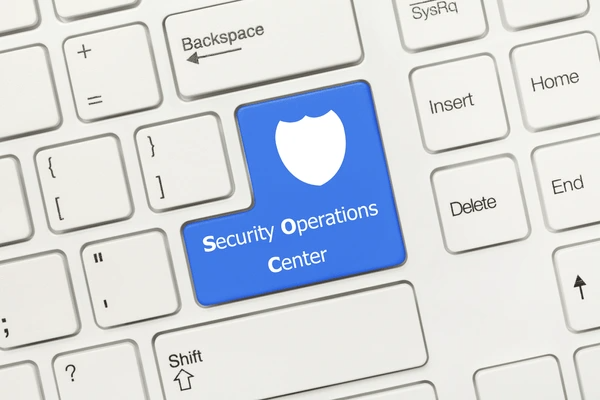A Security Operations Center (SOC) is one of the important parts of an organisation’s cybersecurity strategy. It is tasked with continuously monitoring, detecting, and responding to security threats in real-time. The SOC team performs various functions such as threat intelligence gathering, incident response, vulnerability management, and compliance monitoring. The need for a SOC arises from the increasing sophistication and frequency of cyber attacks, making it essential for businesses to have a dedicated team to protect their digital assets. However, establishing and maintaining an effective SOC comes with challenges, including the need for skilled personnel, managing a high volume of alerts, and staying updated with evolving threats.
What is SOC?
In an organisation’s cybersecurity program, a Security Operations Center (SOC) is important. To give a proactive and reactive strategy to cybersecurity and ensure that the company can successfully protect against and respond to cyber threats, a cybersecurity manager should plan and carry out SOC operations.
The Security Operations Centre (SOC) is responsible for continuously monitoring, recognizing, researching into, and resolving cyber threats. The task of keeping an eye on and safeguarding the company’s assets, such as its business systems, personnel records, intellectual property, and brand integrity, belongs to SOC teams.
Certain common-sense security guidelines are applicable whether you are guarding the neighbourhood grocery shop or a bank. Locks on vaults, cash registers, and doors are a minimum requirement, as are cameras intended for these locations as well as others across the building. The same thing goes for your network. It is sufficient to restrict access using simple firewall rules, ACLs, and passwords. To identify unusual activity that can point to a potential vulnerability, you still need to continuously check that these security measures are in place across all of your devices.
The SOC Service is responsible for carrying out the company’s overall cybersecurity strategy and serves as the centre of attention for coordinated efforts to detect, evaluate, and prevent cyberattacks.
What are the functions performed by SOC?
- Prevention and detection:
Consider the case of two businesses, one having a strong and functioning SOC team and the other one nothing. This demonstrates how beneficial prevention is in the context of cybersecurity.
The business that had a SOC team kept a close eye on its systems all the time to identify and prevent any malicious activity before it could do any harm. They were always one step ahead, representing no threat and causing no harm.
If we consider another company, there were no equivalent security precautions. Even though they were able to put out the majority of the fire as they started, their network was continually under attack, and occasionally there was still significant damage.
- Investigation:
A SOC analyst identifies the type of threat and the level of infrastructure penetration by analyzing suspicious activity. The security analyst takes an attacker’s perspective to examine the network and activities of the company, searching for critical signs and vulnerabilities before they are taken advantage of. The analyst recognizes and prioritizes the many kinds of security issues by understanding the development of attacks and knowing how to take appropriate action before things go out of control. To conduct a successful evaluation, the SOC analyst integrates data about the company’s network with the most recent worldwide threat intelligence, which includes details on the tools, methods, and patterns used by attackers.
- Response:
The SOC team steps in to contain and resolve an issue as soon as it is verified. To protect data, they act immediately to isolate impacted endpoints, stop malicious activities, and remove suspicious files.
Following that, they turn their attention to restoration, bringing systems back online and making any necessary configuration changes or backups in the case of ransomware.
Their objective is to restore the network to its pre-incident condition, offering comfort and a further line of defence against recurrence of the same kind in the future.
Why the SOC is needed?
Any company can benefit from having a unique SOC service in several ways, from consistent system monitoring and complete visibility to reduced cybersecurity costs and enhanced teamwork. Because cybercriminals never require a break, your business needs to be ready at all times.
Benefits Of Security Operations Center's:
- Constant Monitoring:
Business network monitoring may now be done better and more intelligently because of SOCs. Usually, SOC teams typically have access to the newest instruments available for threat identification and monitoring. They can therefore identify and contain hazards more effectively. With the use of these technologies, they can identify any network vulnerabilities and fix them before they become problems.
- Centralized knowledge:
Given the multitude of attack paths that hackers employ to breach a network, some of them may go unnoticed. Cyber-security professionals are better able to have an in-depth knowledge of the entire network and potential vulnerabilities because of SOCs. To provide the entire SOC team with access to the same knowledge and improve their ability to recognize and eliminate threats, they can exchange and preserve pertinent information centrally.
- Lower Cybersecurity Expenses:
SOCs are typically less expensive than alternative cyber-security tactics. Businesses just have to deal with the expense of one site when the whole workforce is present. On the other hand, companies may have to pay for the use of several spaces or rooms if specialists are dispersed among various sites, which would raise operating costs.
- Improved The collaboration:
SOCs facilitate improved communication and coordination amongst the cyber-security team’s members. Being in the same place makes it easier for them to collaborate and come up with ideas for improving network monitoring and security. They may also make sure that they do not twice up on each other’s efforts because they are aware of each other’s actions and tasks.
- Reports on Threats:
A decentralised cyber-security approach allows for the reporting of possible threats at multiple locations. Due to the possibility of a delay in sending the information to the responsible person, there can be a delay in responding to the reported threat. There may have been a serious network vulnerability by the time the information arrives and a response is started. Threats are reported at a single location using SOCs, which speeds up threat identification and response times significantly.
What are the Challenges of SOC?
Here are the challenges of SOC you need to know
- An excessive number of security alerts: When it comes to security systems, cybercriminals have become more creative, which means that your IT staff will always be overwhelmed with security alerts. These alerts not only reduce productivity and induce anxiety in workers, but their false positives raise operating expenses for your business. According to a survey, more than half of participants said their security processes had resulted in false-positive warnings.
- Following the cybercriminals: Tracing cybercriminals is like tracing a ghost because they are skilled at hiding their identities and frequently disappear without a trace. But as seasoned detectives are aware, even the most skilled criminals leave some evidence behind, and that evidence might just be sufficient to solve the case.
- Upgrade and reconfigure your system for improved security: After hours or days of intense focus and concentration investigating cyber threats, your security analysts finally identify the true culprit behind the attack. This brings a sense of relief and accomplishment – they found it! However, this relief quickly wears off as they have to improve and restructure their security systems so that the same breach does not happen again.
- Lack of information: Even though the organisation employs people with extensive expertise in security systems, more is still required to ensure that threats are detected promptly. Lack of knowledge will make it difficult for staff to recognize any problems and will result in a poor response that will make matters worse. Additionally, it results in a significant amount of time being lost on identifying false positives and negatives rather than resolving the actual problem before it’s too late.
- Technology: SOC services face a myriad of constantly shifting technology challenges rather than simply one. To satisfy the demands of both internal and external requirements, sufficient resources and instruments are required. Every day, new dangers surface, and to identify them, the right tools must be used, which leaves gaps in analytics metrics and filtering. Beyond what information security departments can offer, you need more advanced and well-designed solutions to meet the challenge tools that can recognize suspicious activity before dangers materialise.
A SOC is integral to any organization’s cybersecurity strategy, providing continuous monitoring, threat detection, and incident response. Understanding its functions, necessity, and challenges is crucial for optimizing its effectiveness. As a service provider Geeks Solution is dedicated to delivering the best SOC Cybersecurity solutions, we understand the complexities involved in managing a Security Operations Center and aim to provide insights to help businesses enhance their security posture.




